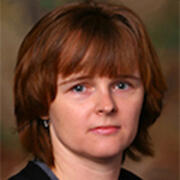Have questions about this report? Ask the author(s).
Examines the determinants of the locations of high-tech clusters in the United States. Summarizes the development of high-tech activities in Arizona, Metro Phoenix, and Metro Tucson relative to selected states and metropolitan areas.
EXECUTIVE SUMMARY
The crucial location determinant for high-tech firms is access to a pool of highly skilled and knowledgeable workers. Since people are mobile, this makes the optimal location of high-tech industries indeterminate. The locations of many high-tech clusters can be traced to decisions that were made by key inventors or pioneering firms for reasons that are no longer important today.
While the initial location of a pioneering firm may be arbitrary, subsequent growth in the industry and a clustering of new firms around the pioneering firm creates efficiencies of agglomeration that serve to lock in the initial location. As the cluster grows, a spatial concentration of new firms helps to create thicker labor markets for specialized labor, attracts specialized suppliers and service providers, and promotes the spillover and informal exchange of industry knowledge that is critical for innovation. Because clusters are comprised of hundreds of independent firms and thousands of workers, their locations generally are resistant to change.
Most major high-tech clusters evolved through a special set of historical circumstances that would be difficult to replicate. In market economies, clusters are self-organizing and owe more to local entrepreneurial spirit and business culture than to an availability of venture capital, policies of local universities to commercialize their research, or to special relocation incentives provided by state and local governments. There is no standard rule or formula for cluster development. Nevertheless, there are some regularities and recurring themes:
In the late 1950s, California, Maryland, and Washington were the leading states for overall high-tech activity. During the 1960s, Arizona became one of the leaders while Maryland dropped back. Massachusetts gradually moved up, ranking second by 1988. In recent years, Washington and Massachusetts have led the states on the high-tech employment share of the total economy, followed by California and Colorado. The other first-tier high-tech states currently are Maryland, New Hampshire, Utah, and Virginia.
Arizona was in the top tier of states on high-technology activity from the 1960s into the 1980s. Its strength, however, was strictly in manufacturing, particularly in computing equipment, electronics, and instruments. The concentration in computing equipment and instruments did not last, though gains in aerospace helped to cushion the losses in these sectors. As Arizona’s overall high-technology activity declined relative to the nation, Arizona became classified as a second-tier high-tech state.
Currently, Arizona’s overall high-tech share of the economy is only equal to the U.S. average. Arizona remains strong in semiconductors and aerospace, but has little high-tech activity in other sectors.
As discussed above, initial reasons for the development of most high-technology clusters were either arbitrary or no longer are of relevance. This certainly is true in Arizona. The development of the aerospace, electronics, and related high-tech clusters in Arizona in the 1950s and 1960s largely was the result of Arizona’s climate and the affordability and availability of large parcels of private land. In addition, the federal government and a supportive congressional delegation channeled Department of Defense funding into the state, helping to attract Motorola’s research division shortly after WWII to develop and manufacture transistors for the U.S. military.
Reasons for the subsequent decline in most high-tech activities are speculative, but Arizona has long compared unfavorably in various business location factors. Correcting these deficiencies was the focus of the early 1990s project “Creating a 21st Century Economy: Arizona’s Strategic Plan for Economic Development” that ultimately was largely unsuccessful.
Based on a definition of an overall high-tech industrial employment share at least 50 percent higher than the national average, only four sizable high-tech metro areas were present in the United States in the late 1950s: Boston, Phoenix, San Diego, and Seattle. San Jose joined this exclusive group in the 1960s, followed in the late 1970s by Austin, Raleigh-Durham, and Washington, D.C. In the late 1990s, San Francisco attained a high-tech employment share at least 50 percent higher than the U.S. average, followed shortly after by Portland. Denver recently reached this threshold.
Once reaching a high-tech share at least 50 percent higher than the national average, only one large metro area — Phoenix — has dropped below this level. By the mid-1990s, Metro Phoenix was below this mark and its high-tech employment share has since dropped to only 9 percent above the national average. Based on aggregate earnings, its 2022 high-tech share was 3 percent less than the U.S. average. Metro Phoenix had ranked second or third among 12 selected large metro areas on the high-technology employment share from 1959 through 1973, but by 1998 its rank was down to tenth. It has ranked last on the high-tech employment share since 2005.
The high-tech share of the Metro Phoenix economy is negatively affected by the area’s rapid growth in base industries other than high technology. However, this is not the major cause of the area’s decline in high-tech share relative to the nation and to other large high-tech metro areas since the 1970s. The percent change in high-tech employment in Metro Phoenix between 1973 and 1998 was the least of the 12 large high-tech metro areas analyzed in this report. Since then, Metro Phoenix has ranked ninth on the percent change.

After completing his undergraduate degree in economics at Wake Forest University, Kent received his Ph.D. in economics from Rice University in 1979. He was an assistant professor at ASU from 1978 to 1983. After leaving the university for seven years, during which he worked in the research department of the Federal Reserve Bank of Dallas, he returned to ASU to teach in 1991. He joined ASU’s L. William Seidman Research Institute in 1999.

Dennis received a B.A. in economics and mathematics from Grand Valley State University, a M.S. in economics from Michigan State University, and a Ph.D. in economics from Michigan State University in 1978. He has served on the faculty of the Department of Economics at ASU since 1979, as director of ASU’s L. William Seidman Research Institute (2004-24), and as the director of the Office of the University Economist since 2005.

Eva received her B.S. in finance from Babes-Bolyai University in Romania, a M.S. in business management from Politehnica University in Romania, and a M.A. in economics from Western Michigan University in 2000. She worked as a research analyst at the W. E. Upjohn Institute in Kalamazoo, Michigan prior to joining ASU’s L. William Seidman Research Institute in 2007.

After receiving his Bachelor of Business Administration from the University of Toledo, Tom earned his Master of Business Administration from Arizona State University in 1976. After working in the private sector, he joined ASU in 1980, working for the predecessor of the L. William Seidman Research Institute. Since 2005, he has served as manager of research initiatives in the Office of the University Economist.

Summary table of ASU's economic impact in FY2025

An update to the December 2023 paper that presented data through 2023, estimates are presented of the number of ASU graduates working in Arizona, as well as their average wage, aggregate wages, and tax payments. Estimates are made for each year from 2012 through 2024.

This infographic estimates the total (direct, indirect and induced) economic impacts of the infusion of new dollars associated with Sun Devil Football regular season home games in 2024-25 season the…